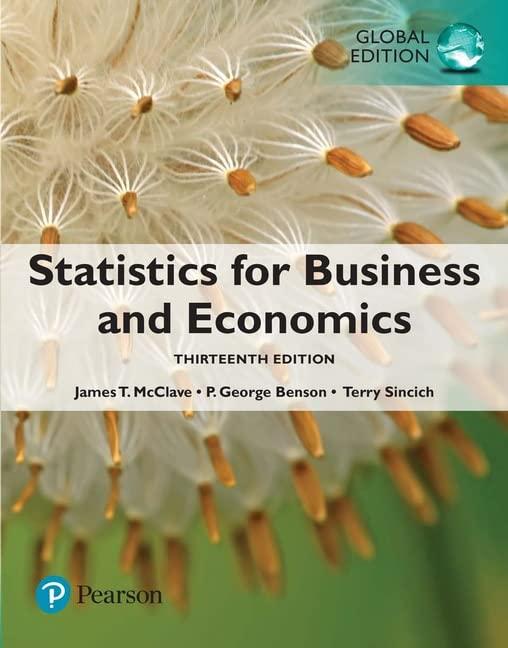Question
Standardized values allow us to take data from any distribution and convert them into a distribution that has a mean of 0 and a standard
Standardized values allow us to take data from any distribution and convert them into a distribution that has a mean of 0 and a standard deviation of 1. This can become very useful for us as we start delving into inferential statistics
First, we will discuss computing Z values. The standard formula we use to compute Z values is as follows: Z=ValueMeanStandardDeviation. If we are computing a Z-value for a single measurement coming from a population, we get the following: Z=(X)/, where X is the measurement value, is the population mean, and is the population standard deviation. The Z-value we compute tells us how many standard deviations away from the mean our measured value falls. For example, a Z-score of 3 means the measured value falls three standard deviations above the mean. A Z-score of -1.5 means our measured value falls 1.5 standard deviations below the mean. If a measurement falls more than 2 standard deviations away from the mean (Z 2 or Z -2), then the data point can be considered an "extreme" data point and should be investigated further.
The Central Limit Theorem (CLT) tells us that if our sample size is sufficiently large (usually n 30 will suffice), then the distribution of the sample mean will be approximately Normal. This is a very useful property for us in statistics. We know that if our data is Normal, or approximately Normal, we can find probabilities using the area underneath the Normal curve. By converting our values to Z-values, we can compute the probabilities using the area under the standard Normal curve, or the Z-curve.
If we are trying to find the Z-value for a sample mean, we use the following equation:Z=x/n.
The T-distribution is used for standardizing the value of the mean when we do not know the population standard deviation. In this case, the bets approximation we can use is the sample standard deviation. So, if we are trying to find the T-value for a sample mean, we use the following equation: T=xs/n.
Instructions
For this discussion post, we are going to practice finding Z and T values for sets of data. We have two scenarios to look at:
Scenario 1 - The average BMI of patients suffering from gout is known to follow a Normal distribution with a mean of 29.6 with a standard deviation of 7.5. We decide to sample some people suffering from gout and find the following from our samples:
Sample 1 - Sample size of 30 with a Mean BMI = 31.8
Sample 2 - Sample size of 50 with a Mean BMI = 31.6
Scenario 2 - The average BMI of patients suffering from gout is known to follow a Normal distribution with a mean of 29.6, but no standard deviation was reported. We decide to sample some people suffering from gout and find the following from our samples:
Sample 1 - Sample size of 30 with a Mean BMI = 27.6, and a sample standard deviation of 6.8
Sample 2 - Sample size of 50 with a Mean BMI = 28.0, and a sample standard deviation of 7.7
Discussion Prompts
Answer the following questions in your initial post:
- For Scenario 1, will you choose to compute a Z or a T value? Explain your reasoning
- Compute the Z or T value for each one of your samples. Are either of these samples concerning to us? If so, what reasons may attribute to something like this?
- For Scenario 2, will you choose to compute a Z or a T value? Explain your reasoning
- Compute the Z or T value for each one of your samples. Are either of these samples concerning to us? If so, what reasons may attribute to something like this?
Step by Step Solution
There are 3 Steps involved in it
Step: 1

Get Instant Access with AI-Powered Solutions
See step-by-step solutions with expert insights and AI powered tools for academic success
Step: 2

Step: 3

Ace Your Homework with AI
Get the answers you need in no time with our AI-driven, step-by-step assistance
Get Started


